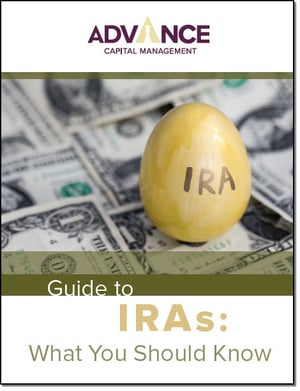Spousal IRA: How Stay-at-Home Parents Can Save for Retirement
December 13th, 2018 | 2 min. read

There are many great reasons to be a stay-at-home parent. To name a few, it can make financial sense when you factor in the costs of daycare. You and your spouse don’t have to juggle two busy work schedules. And, most importantly, you get to spend valuable time with your children as they grow.
No one becomes a stay-at-home parent for the retirement benefits. That’s because, of course, there aren’t any. A child needs to learn to walk before he or she can administer a 401(k) plan. However, a stay-at-home husband or wife can still be a crucial part of their family’s financial future.
Let’s introduce you to the spousal IRA.
What is a spousal IRA?
An Individual Retirement Account (IRA) is one of the most effective ways to save for retirement. It’s a type of investment account in which you save and invest money to help fund your retirement.
Benefits of an IRA include significant tax breaks, a greater selection of investments than employer-sponsored accounts, and the ability to have it directly managed by a financial adviser.
The IRS requires you to have earned income to contribute to an IRA. Married couples, however, get a pass. If one spouse isn’t working or earns a very low income (e.g., a stay-at-home parent), both spouses can still contribute to separate IRAs.
A spousal IRA enables a stay-at-home parent to set up a retirement account in his or her own name. So, it can help stay-at-home parents feel financially empowered and allow them to contribute toward the couple’s retirement.
Spousal IRA rules
In order to qualify, spouses must file their taxes jointly.
What’s unique about a spousal IRA is that contributions can be made from either spouse’s earnings. Annual contribution limits depend on what the working spouse is allowed, up to $6,000 if you’re under age 50 (2019). Those 50 or older can save an additional $1,000, for a total up to $7,000 (2019).
If both spouses own IRAs, the total amount contributed to both IRAs must be the lesser of the couple’s joint taxable income or double the annual IRA contribution limit. For example, a couple under age 50 can contribute up to $11,000.
When setting up a spousal IRA, you can choose between a traditional and a Roth account. The primary difference is in how they are taxed.
A traditional IRA is a tax-deferred account, which means you don’t pay taxes on the money you contribute until you withdraw it in retirement. A Roth IRA, on the other hand, is funded with after-tax dollars, so you can grow and withdraw your money tax-free. Keep in mind, there are income restrictions for Roth IRAs. Which IRA type is right for you depends on your personal financial situation.
How to open a spousal IRA
You can open the account with a financial adviser, such as Advance Capital Management, or on your own through many other financial institutions.
Before you open a spousal IRA, however, there are several important factors to consider. As mentioned above, what type of IRA is right for you? How much should you save in each spouse’s various retirement accounts? What investment funds are most appropriate for your goals?
Therefore, think about opening a spousal IRA with the help of a financial adviser, who can evaluate your family’s entire financial picture.
Investing in the future
Being a stay-at-home parent is often thought of as a difficult, underappreciated job. In reality, it’s a tremendously valuable role for any family. As a stay-at-home parent, you are investing time and energy to achieve a successful future for your family. With a Spousal IRA, that can also include your household’s finances.
Learn more about saving and investing in an IRA by downloading our guide: IRAs: What You Should Know. Whether you’re a stay-at-home parent, small business owner, freelancer or someone who just doesn’t like their 401(k), our guide explains how you can save for retirement. (Click the image)
Advance Capital Management is a fee-only RIA serving clients across the country. The Advance Capital Team includes financial advisers, investment managers, client service professionals and more -- all dedicated to helping people pursue their financial goals.

